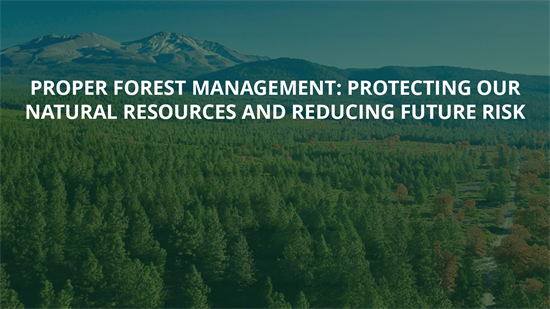Proper Forest Management: Protecting our Natural Resources and Reducing Future Risk
Washington,
September 12, 2024
Tags:
Healthy Forests
Proper Forest Management: Protecting our Natural Resources and Reducing Future Risk
By Executive Vice Chair Doug LaMalfa (CA-01) The recent Park Fire in my district is yet another reminder of the urgent need for better forest management and post-fire recovery efforts. The destruction of homes, businesses, and cherished natural resources is heartbreaking, and our residents are left grappling with the aftermath. But the real issue runs deeper. Poorly managed forests and neglected post-fire cleanup have made these fires more destructive than they should be. We’ve seen this pattern before. Past fires have left massive burn scars—landscapes filled with dead trees, charred brush, and hazardous rubble. These areas, left uncleared and untreated, become fuel for future fires. Instead of removing this fire hazard, we’ve allowed it to sit, creating tinderboxes waiting for the next spark. The failure to address burn scars not only puts nearby towns at risk, but also slows down the natural recovery of the affected ecosystems. Without proper management, these damaged areas become prone to soil erosion, flooding, and even landslides. What we need is proactive forest management. This means allowing for regular controlled burns, thinning dense forests, and removing dead wood before it turns into fuel for the next wildfire. At the same time, we need comprehensive post-fire cleanup efforts with an emphasis on replanting and restoring the forest. Addressing burn scars must be prioritized to ensure that both the people and wildlife have a chance to recover, the area has an opportunity to become green again, and our water can remain free of silt and ash. By embracing these common-sense approaches, we can reduce the intensity of future fires and protect both our towns and our natural resources. Fire is inevitable in California, but the level of destruction we’ve seen recently doesn’t have to be. It’s time for smarter forest management and more aggressive post-fire recovery to prevent future disasters and keep our forests on the road to recovery. The safety of our people, the cleanliness of our water, and the health of our forests depends on it. |
Stay Connected
Use the following link to sign up for our newsletter and get the latest news and updates directly to your inbox.


